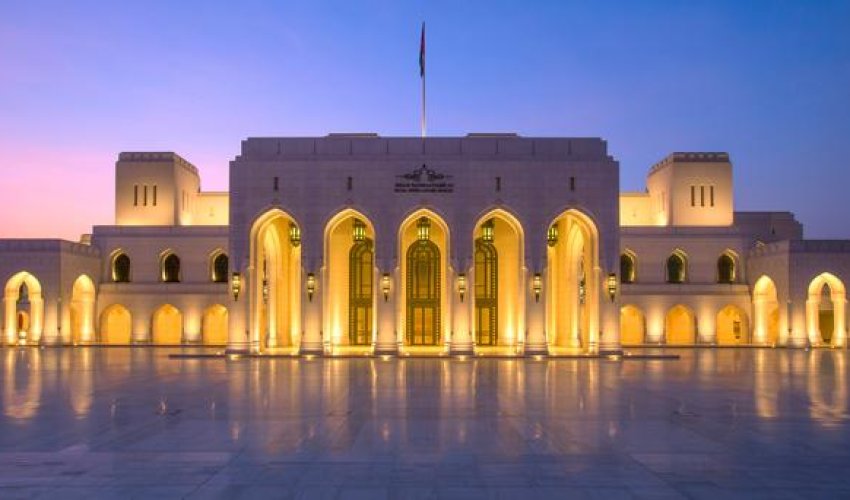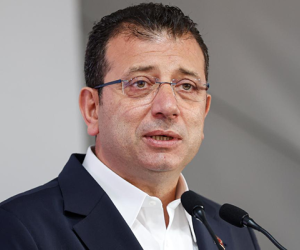Oman’s operatic shift in sound – and sin - PHOTO

Construction schedules are yet to be confirmed, but Dubai, Kuwait and Baghdad have all announced plans to build their own opera houses, while Doha is already home to a well-established performing arts centre called Katara Village, which opened in 2010.But this scramble to construct opera houses in the Gulf is more than just a trend. It represents a cultural shift in these conservative Islamic nations, where indulging in the pleasure of music has traditionally been regarded as haram (sinful). In fact before the opera house even opened, in 2010 the Grand Mufti of Oman, Sheik Ahmed bin Hamad al-Khalili, issued a fatwa against the venue, deeming it “unacceptable” for Muslims to visit.Other critics questioned whether the building’s undisclosed cost could have been put to better use at a time when the global financial crisis was biting and the Arab Spring was gathering momentum. “The situation in Oman was tense,” explained Susan Al Shahri, a columnist for Muscat Daily. “Most of the demands during the Arab Spring involved better economic conditions – so the Royal Opera House Muscat seemed like a pure indulgence at the time.”The mastermind behind the Royal Opera House, the Omani Sultan Qaboos bin Said Al Said, is renowned for his liberal policies. Since overthrowing his father in a 1970 coup, he repealed strict censorship laws and granted women the right to vote (although in an absolute monarchy like Oman, this right carries little influence). By appointing Christina Scheppelmann as the opera house’s director general, the sultan has championed the advancement of women in a region where gender inequality is rife.Politics aside, the opera house is a crowning glory for the music-loving sultan – perhaps even his masterpiece. Set in verdant, manicured gardens – a manmade oasis in a desert city – the venue is not only a grandiose celebration of international culture, but a triumph of contemporary Islamic architecture. Pulling up outside the building on a recent visit, I was blinded by the dazzling white marble façade as it reflected the sun’s rays. I reached for my shades, but even through the darkened lenses my senses were stunned – not by the glare, but the sheer stature of the building. The marble archways alone soared some 9m high.I walked through them and into the opera house, where tour guide Iman Said Al Harthi explained more about the architecture. “The ceiling is carved from Burmese teak, the marble comes from Italy and the lights are from Austria,” she said. These materials are a celebration of Muscat’s rich maritime history and represent the natural resources that were discovered by early Omani seafarers, who were traversing oceans from as far back as the third millennium BC. Yet the opera house is more than just lavish embellishments; it has hosted an impressive array of talent, including lauded Italian tenor Andrea Bocelli, American soprano Renée Fleming and 15-time Grammy-award-winning cellist Yo-Yo Ma.The key to attracting such talent, commentators said, lies in the auditorium’s acoustics. “The Royal Opera House Muscat is the finest music venue I have been in,” said Al Shahri, who, like the sultan, developed a keen interest in music while studying in Britain. “I have been in the London Coliseum, the Royal Albert Hall and many others. There’s no comparison.”While reminiscent of the great opera houses of Europe, with carved wooden panelling and ornate stuccos, the Royal Opera House Muscat also features technological innovations that make this one of the most state-of-the-art theatres in the world.Touch-screens are located on the back of every seat so patrons can read translated subtitles of each performance. More impressive, though, is the ability to transform the auditorium from a proscenium style theatre, characterised by its arched ceiling, curtained stage and orchestra pit, into a symphonic concert hall – a shoebox shaped music hall with a flat ceiling – at the touch of a button.This versatility has enabled the venue to host anything from jazz concerts and African brass bands to Shakespeare productions and ballets – art forms that have found a new fan base in the Gulf, said Nasser Al-Taee, an advisor to the opera house’s board of directors. “Our tickets are sold out months in advance, which is not part of our culture because we Omanis like to be more spontaneous,” he said. “The trend is catching on – other countries in the Gulf are interested in having similar organisations – and that’s a good thing for the region.”The theatre’s success is also beneficial for international visitors, who can watch world-class performances in a world-class venue for less than they would pay in the theatres back home; tickets for shows start from as little as one rial and opera tickets can be purchased for half what you would pay in more established venues. When it comes to the performing arts, the stage is set for great things in the Gulf.(BBC)Bakudaily.az
Latest news 
More news 



































 Photo
Photo 



 Video
Video 

